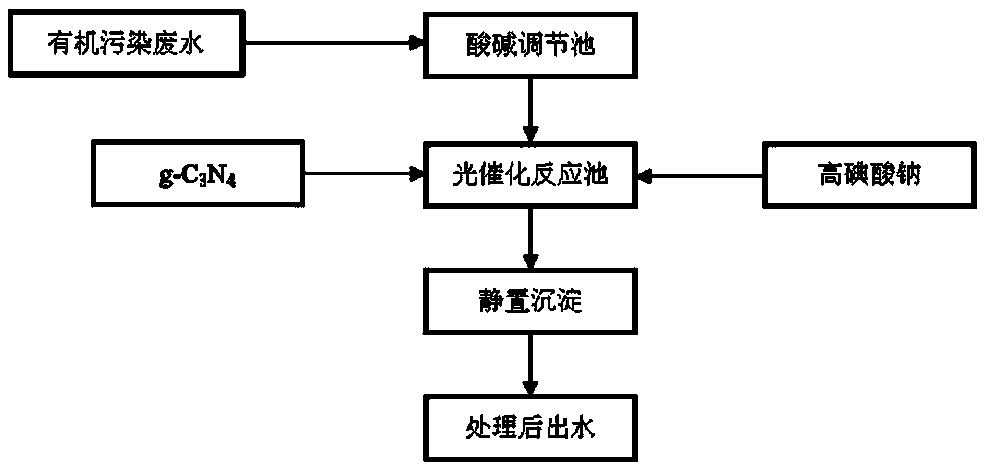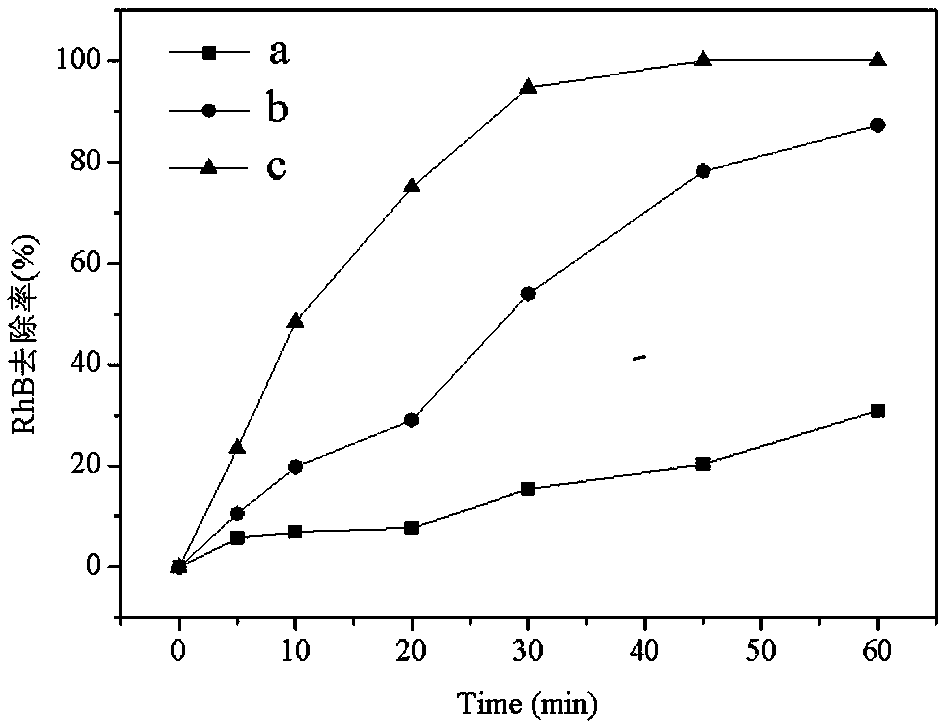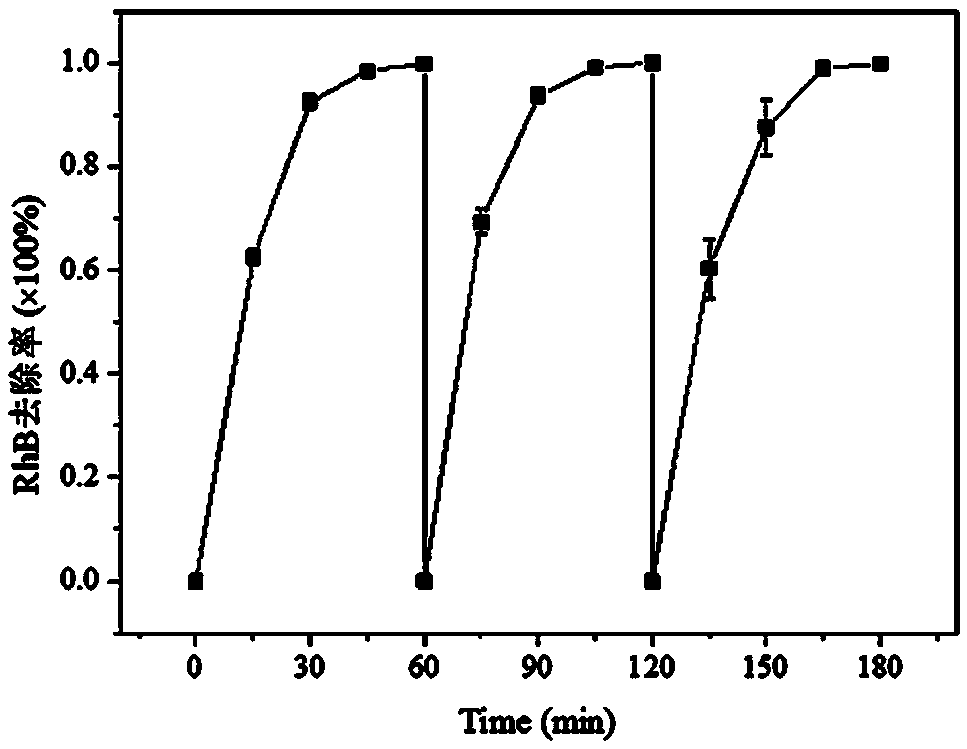Method for treating organic wastewater by utilizing g-C3N4 heterogeneous activated periodate
A periodate, organic wastewater technology, applied in chemical instruments and methods, chemical/physical processes, light water/sewage treatment, etc., can solve problems such as secondary pollution, achieve low cost, solve secondary pollution, high The effect of degradation efficiency
- Summary
- Abstract
- Description
- Claims
- Application Information
AI Technical Summary
Problems solved by technology
Method used
Image
Examples
Embodiment 1
[0024] Example 1: g-C under natural light conditions 3 N 4 Heterogeneous Activation of Sodium Periodate for Degradation of Organic Pollutants
[0025] Add sodium periodate to 100mL of wastewater to be treated (the wastewater contains rhodamine B, a refractory organic pollutant, and its concentration is 20 mg / L), so that the concentration is 1mmol / L, and magnetically stirred to make it fully mixed , and adjust the initial pH value of the mixture to 5.0. Then, add g-C to the above system 3 N 4 Particles, so that the concentration is 1.0g / L, and the catalytic degradation reaction is carried out at a room temperature of 20°C. Set the same conditions without adding g-C 3 N 4 The granular system was used as a control experiment.
[0026] During the reaction, 1 mL was sampled at fixed reaction time points—0, 5, 10, 20, 30, 45, and 60 min, and 0.1 mL of 2 mol / L sodium thiosulfate was added to the sample to terminate the reaction. Immediately after filtering through a 0.22 μm f...
Embodiment 2
[0028] Example 2: g-C under visible light conditions 3 N 4 Heterogeneous Activation of Sodium Periodate for Degradation of Organic Pollutants
[0029] Add sodium periodate to 100 mL of waste water to be treated (the waste water contains rhodamine B, a refractory organic pollutant, and its concentration is 20 mg / L), so that the concentration is 1 mmol / L, and magnetically stirred to make it fully mixed. Homogenize, and adjust the initial pH value of the mixture to 5.0. Then, add g-C to the above system 3 N 4 particles, so that the concentration is 1.0g / L, and at the same time turn on the 500W visible light source above the system, and carry out the catalytic degradation reaction at room temperature of 20°C. Set the same conditions without adding g-C 3 N 4 The granular system was used as a control experiment.
[0030] During the reaction, 1 mL was sampled at fixed reaction time points—0, 5, 10, 20, 30, 45, and 60 min, and 0.1 mL of 2 mol / L sodium thiosulfate was added to t...
Embodiment 3
[0032] Embodiment 3: repeatability test
[0033] Add sodium periodate to 100mL of wastewater to be treated (the wastewater contains rhodamine B, a refractory organic pollutant, and its concentration is 20 mg / L), so that the concentration is 1mmol / L, and magnetically stirred to make it fully mixed , and adjust the initial pH value of the mixture to 5.0. Then, add g-C to the above system 3 N 4 particles, so that the concentration is 1.0g / L, and at the same time turn on the 500W visible light source above the system, and carry out the catalytic degradation reaction at room temperature of 20°C.
[0034] After the reaction was carried out for 60 min, the visible light source was turned off, and 2 mL of 1000 mg / L rhodamine B and 5 mL of 20 mmol / L sodium periodate were added to the system again, and the pH of the mixture was adjusted to 5.0. Then, turn on the light source again to start the reaction, and the reaction time is still 60 min. Repeat this method 2 times.
[0035] Dur...
PUM
 Login to View More
Login to View More Abstract
Description
Claims
Application Information
 Login to View More
Login to View More - R&D
- Intellectual Property
- Life Sciences
- Materials
- Tech Scout
- Unparalleled Data Quality
- Higher Quality Content
- 60% Fewer Hallucinations
Browse by: Latest US Patents, China's latest patents, Technical Efficacy Thesaurus, Application Domain, Technology Topic, Popular Technical Reports.
© 2025 PatSnap. All rights reserved.Legal|Privacy policy|Modern Slavery Act Transparency Statement|Sitemap|About US| Contact US: help@patsnap.com



